The Search for the Portrait that Belonged to Kittel Pages at The Face Of Bach
The Queens College Lecture of March 21, 2001 - Page 12 - Bach in a Short Perruque? Yes, Bach in a Short Perruque!
The Face Of Bach
This remarkable photograph is not a computer generated composite; the original of the Weydenhammer Portrait Fragment, all that
remains of the portrait of Johann Sebastian Bach that belonged to his pupil Johann Christian Kittel, is resting gently on the surface
of the original of the 1748 Elias Gottlob Haussmann Portrait of Johann Sebastian Bach.
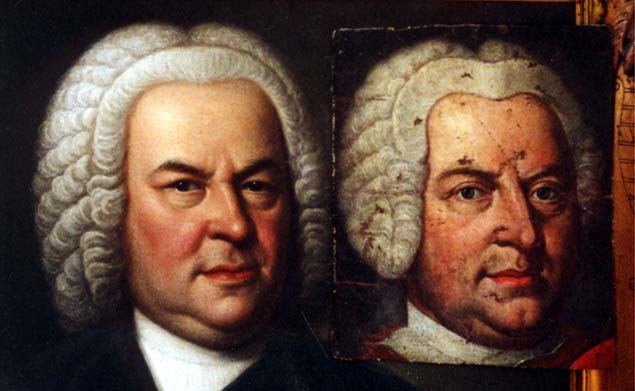
1748 Elias Gottlob Haussmann Portrait, Courtesy of William H. Scheide, Princeton, New Jersey
Weydenhammer Portrait Fragment, ca. 1733, Artist Unknown, Courtesy of the Weydenhammer Descendants
Photograph by Teri Noel Towe
©Teri Noel Towe, 2001, All Rights Reserved
The Search for the Portrait that Belonged to Kittel
The Queens College Lecture of March 21, 2001
Page 12
Bach in a Short Perruque?
Yes, Bach in a Short Perruque!
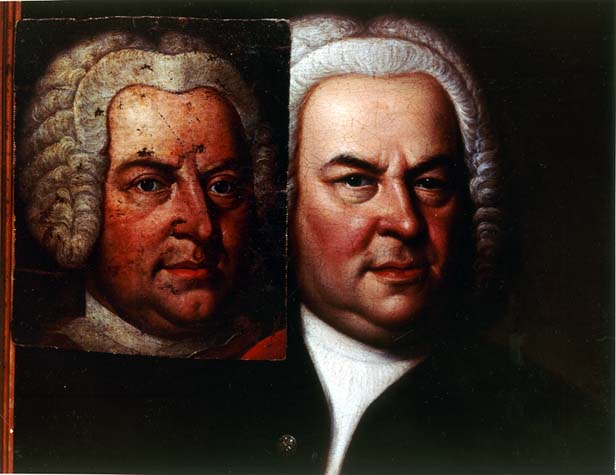
Photograph by Greg Kitchen, ©Teri Noel Towe, 2001
I am fairly confident that the first major difference that each of you noticed between the Weydenhammer Portrait Fragment and the
1748 Haussmann Portrait when you started to study the handout is the difference in the perruques, the wigs. The Haussmann image
of Bach is firmly ingrained in our souls, an image that is reinforced by the fact that, with one very little known exception, no other
portrait that is alleged to be Bach shows him in a short wig.
That lone exception is one of the five paintings that Besseler discusses in Fünf Echte Bildnisse Johann Sebastian Bachs, and it is
one of the ones that disappeared during World War II and that is presumed to be a casualty of the bombings. For that painting, we
have only some less than ideal photos from the catalogues of two art dealers. Here, however, is the head of that image, which is
known as the Berlin Portrait and which is an accurate depiction of Bach's facial features that was almost certainly painted from life
in 1747, sandwiched between the Weydenhammer Portrait Fragment and the head of the 1748 Haussmann Portrait:
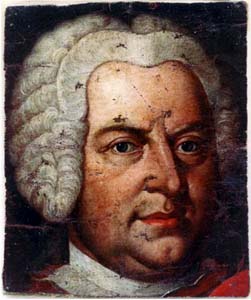
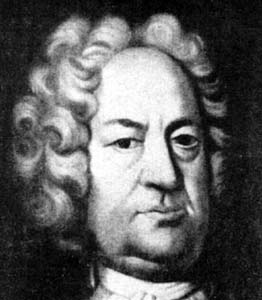
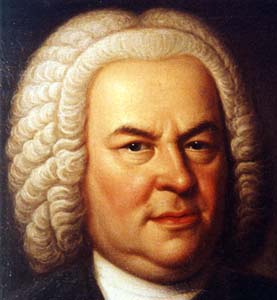
We all also carry with us the ubiquitous preconceived notion that the short perruque did not come into fashion until after Bach died.
The instant reaction, therefore, is that if the wig is that short, at worst, it isn't Bach, and, at best, it is not a portrait from life. We just
are not preconditioned for such a radical concept. Bach in a short perruque? Have you flipped your wig?
No, I have not, at least not on this topic.
I shall now address the issue of the perruque and show you not only why it is not only possible, but also probable, that Bach often
wore a short perruque, and I also sahll show you that short perruques of this kind would have been appropriate as a part of the
Staatskleide that Bach would have been called upon to don in his capacity as Capellmeister von Haus aus to Christian of
Sachsen-Querfurt und Weissenfels.
I have collected a number of dated, contemporaneous images that show men in the 1720s and 1730s wearing short perruques and
wearing them in public, but, in the interests of conciseness and relative brevity, I shall not take up your time with examples like the
ca. 1740 folk-art painting of an outdoor Collegium Musicum performance in Jena, the violone player in the frontispiece to Walther's
Lexicon of 1732, or the men on the street in the 1722 print of the Apelshaus in Leipzig, nor will I take up a lot of your time
explaining why short perruques were widely worn for social and business wear, except on the most formal occasions. Suffice it to
say that, as you can tell from this photo, I know from experience, and, after having worn that long, full perruque in the Reunion
P-rade at my 25th Princeton Reunion in 1995, I know that the bleepity-bleep things are as a hot as a slow oven, and, as you can also
tell from this photograph, I also know what Staatskleide is! {:-{)}
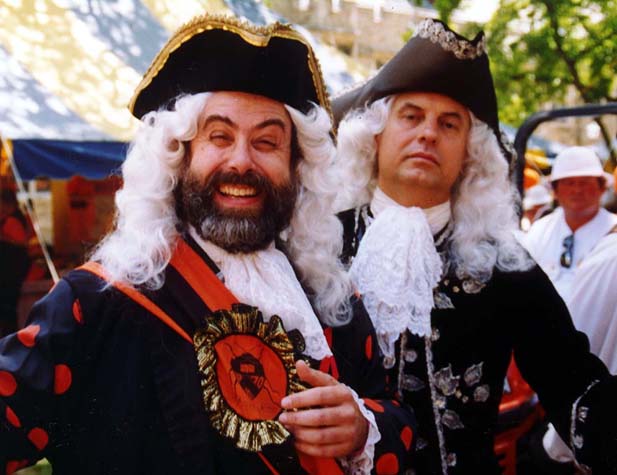
Photo by Peter K. K. Thompson, © Peter K. K. Thompson, 1995
Instead, I shall focus on one especially interesting image, one that is widely known to those who are interested in Bach. It is one of
the plates in the Charles Sanford Terry biography, and it was used for the back endpapers of the 1945 and the 1966 editions of The
Bach Reader. I am talking about the title page to the initial volume of Singende Müse an der Pleisse, the collection of strophic
songs for the middle class "mass" market that was assembled and published in Leipzig in 1736, by an enterprising chap who called
himself "Sperontes".
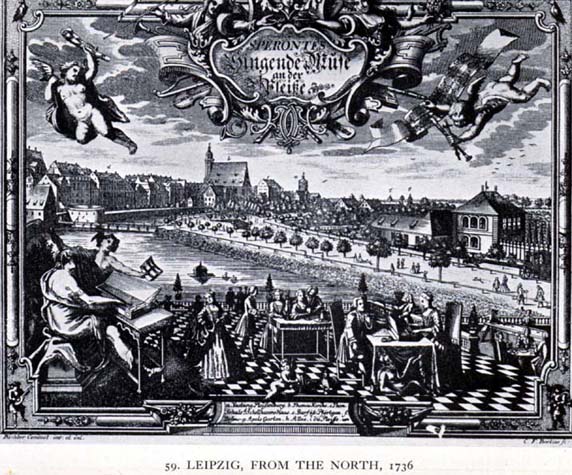
Sperontes was the nom de plume of Johann Sigismund Scholze, a native of Silesia twenty years younger than Bach who came to
Leipzig in his early 20s to study law and never left. He was a talented and ingenious wordsmith who cannily developed the practice
of fitting the words of his strophic songs to pre-existing music, almost all of which was familiar to his audience, and mid 18th
century documents credit two of the songs to Sebastian Bach. The illustration shows groups of prosperous middle-class and
upper-middle class residents of Leipzig indulging in favorite pastimes at an outdoor pleasure garden on the banks of the river
Pleisse, with the cityscape as a backdrop. Let's have a closer look at those prosperous Leipzig residents enjoying some leisure time.
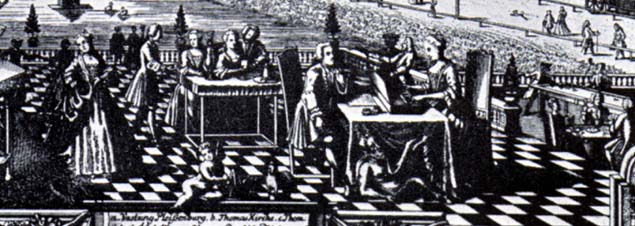
As you can see, men in short perruques, from all walks of life, far and away outnumber those who are wearing longer perruques,
whether serving a lady a libation or playing what looks like a cross between billiards and table shuffleboard. But I would like to
focus in particularly on the gentleman sitting at the table in the foreground.
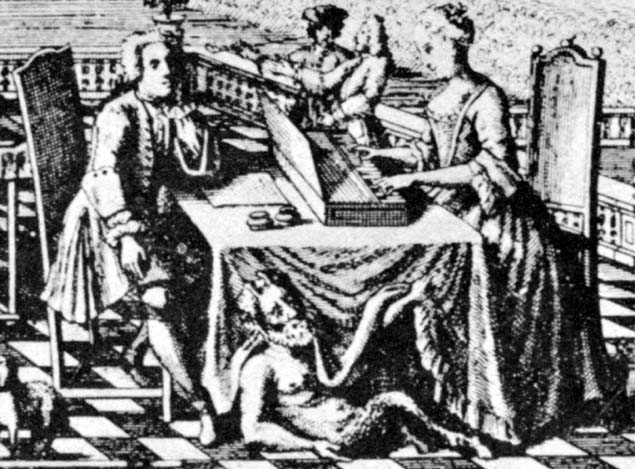
This well dressed gentleman is raptly listening to the attractive (and evidently taller!) woman across the table playing a portable
keyboard instrument, most likely a clavichord, but perhaps a spinet. And he is wearing a perruque that, for all practical purposes, is
identical to the one that Bach is wearing in the Weydenhammer Portrait Fragment.

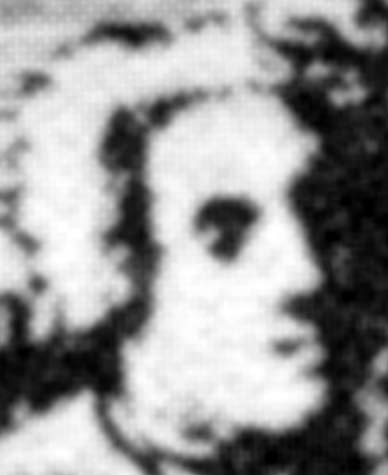
After I made that blurry blow-up as much for the fun of it as anything else, I suddenly realized that the similarity between the face of
the gentleman intently listening to the music making of the comely lady across the table from him and the Bach of the
Weydenhammer Portrait Fragment was quite striking. A protuberant lower jaw, an underbite, a bulge in the bridge of the nose about
a third of the way down.
Astonished by this previously unnotice resemblance (After all, I had never considered the possibility of Bach in a short perruque
either!), I stopped to assess the potential hidden meaning of the scene.

Is it possible that what we see before us, hitherto unrecognized, is a vignette of Sebastian and Anna Magdalena Bach, out for an
afternoon of leisure, away from the children, the hustle and bustle of the household, and the pandemonium of the Thomasschule?
The inventory of Bach's estate includes "1 spinettgen ["little spinet"], valued at 3 Reichsthalers", 17 less than the least valuable
harpsichord. Could that spinettgen in fact be the portable instrument on which the lady is playing? The speculation is delicious, I
told Bill Scheide last week [March 14, 2001], when I brought this vignette to his attention. I pointed out the sheet of paper on the
table between the gentleman and the clavier, but I told Bill that I could not figure out what the two handleless vessels on the table
were. Bill suggested an inkwell and a sander. But, then, he observed, where's the pen? And what is the significance of the satyr
sliding out from beneath the table? Might it be a specific and bawdy reference to the Bachs' parental prowess? Most likely it is not;
it most likely is a reference to some of the "earthier" songs in the collection.
Is this vignette a gracious acknowledgement by Sperontes that the City's renowned Director musices was no stuffed shirt and
enjoyed the same pastimes and light music that the "rank and file" citizens did? Is it a visual in-joke that would have been
understood at once by all and sundry among the Leipzig citizenry? After all, wasn't it Sebastian who said to his son, Friedemann,
"Shall we go to Dresden and hear the pretty tunes?" Wasn't it Sebastian who wrote the "Coffee" Cantata, BWV211, and Mer han
en neue Oberkeet, BWV 212? As I said, it is a delicious speculation, and, for the present, that is all that it is, but I cannot help but
ask if the arrival of the Weydenhammer Portrait Fragment has brought with it the identification of another possible depiction of
Johann Sebastian Bach, one more intimate than any of the others, and with the added bonus of what would be a previously
unknown representation of his second wife, his beloved Anna Magdalena? And that is a wonderful bonus to have in 2001, the
tercentenary of Anna Magdalena Wilcken Bach, who was born in Zeitz on September 22, 1701.
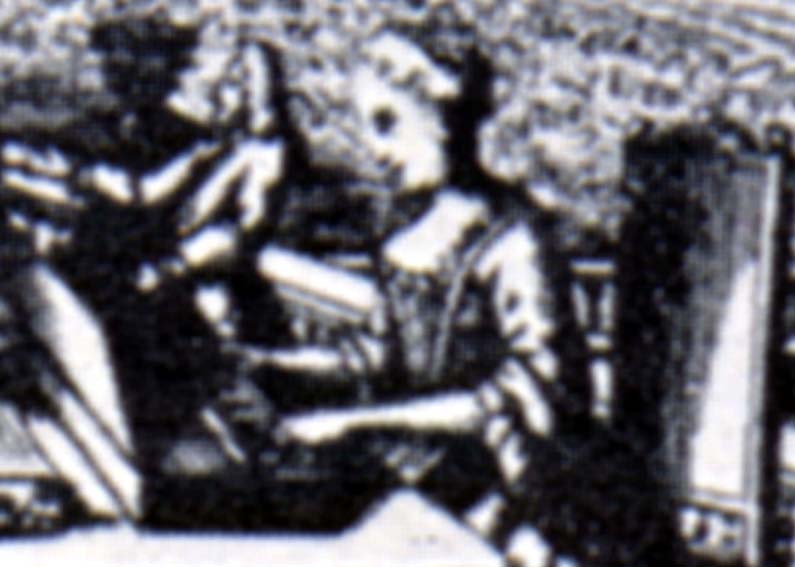
Back to the Weydenhammer Portrait Fragment.
The shorter form of the perruque clearly was more common than most people think, and, were there more time available, I could
show you a number of others from the time period in question and from that part of Germany. Let me show you just one more
example, however.
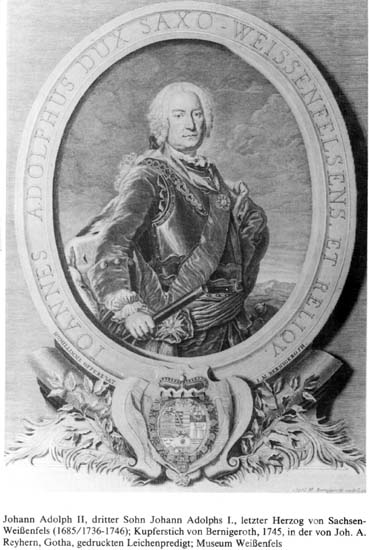
This print, which dates from 1745 and may well be derived from a painting that is several years older, depicts Johann Adolf II, the
younger brother and successor to Christian, Duke of Sachsen-Querfurt und Weissenfels, and the last to hold the title. This
gentleman was the husband of the Dowager Duchess of Sachsen-Weissenfels from whose Estate Gerber believed the portrait of
Bach that belonged to Kittel had come. Johann Adolf II was a career military man, and at the time of his death in 1746, he was the
Commander-in-Chief of the armies of the Elector of Saxony and King of Poland. While it is a bit longer than the one that Bach is
wearing in the Weydenhammer Portrait Fragment (probably because Johann Adolf II is here posed in his "full dress" ducal and
military Staatskleide), this perruque is quite similar in design to that in the Weydenhammer Portrait Fragment.

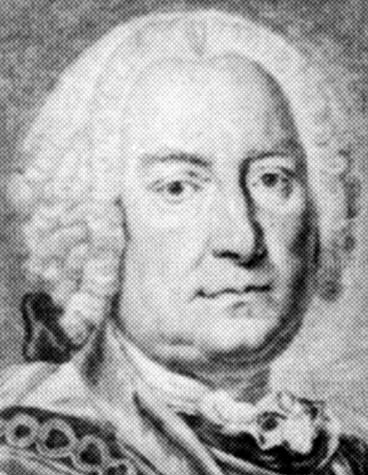
The resemblance provides further evidence that short perruques were part of the official wardrobes of the retinue at the Weissenfels
ducal court. And may I also ask you to take a look at the scalloped collar of the garment that covers the Duke's shirt? It might have
a familar air about it, and I shall return to it in a few minutes.
Please click on 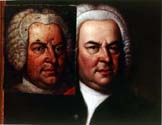 to advance to Page 13.
to advance to Page 13.
Please click on  to return to the Index Page at The Face Of Bach.
to return to the Index Page at The Face Of Bach.
Please click on  to visit the Johann Sebastian Bach Index Page at Teri Noel Towe's Homepages.
to visit the Johann Sebastian Bach Index Page at Teri Noel Towe's Homepages.
Please click on the 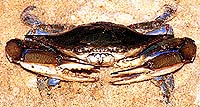 to visit the Teri Noel Towe Welcome Page.
to visit the Teri Noel Towe Welcome Page.
TheFaceOfBach@aol.com
Copyright, Teri Noel Towe, 2000 , 2002
Unless otherwise credited, all images of the Weydenhammer Portrait: Copyright, The Weydenhammer Descendants, 2000
All Rights Reserved
The Face Of Bach is a PPP Free Early Music website.

The Face Of Bach has received the HIP Woolly Mammoth Stamp of Approval from The HIP-ocrisy Home Page.